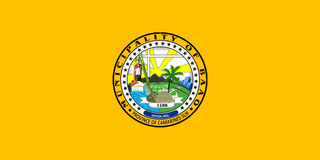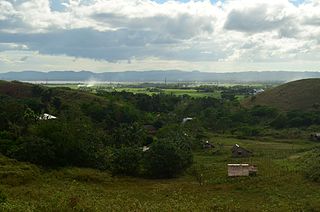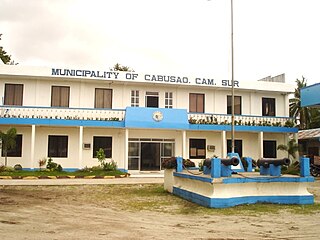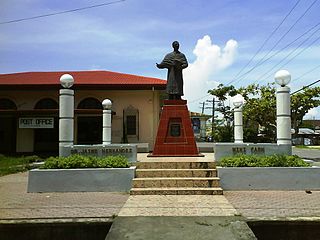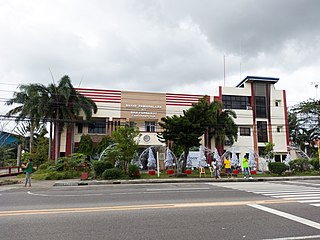This article needs additional citations for verification .(January 2013) |
Tigaon | |
|---|---|
| Municipality of Tigaon | |
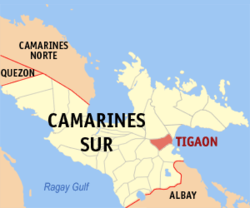 Map of Camarines Sur with Tigaon highlighted | |
Location within the Philippines | |
| Coordinates: 13°37′55″N123°29′51″E / 13.6319°N 123.4975°E | |
| Country | Philippines |
| Region | Bicol Region |
| Province | Camarines Sur |
| District | 4th district |
| Barangays | 23 (see Barangays) |
| Government | |
| • Type | Sangguniang Bayan |
| • Mayor | Pamela Rinah B. Fuentebella |
| • Vice Mayor | Claro F. Llaguno |
| • Representative | Arnulf Bryan B. Fuentebella |
| • Municipal Council | Members |
| • Electorate | 39,355 voters (2022) |
| Area | |
| • Total | 72.35 km2 (27.93 sq mi) |
| Elevation | 91 m (299 ft) |
| Highest elevation | 388 m (1,273 ft) |
| Lowest elevation | 6 m (20 ft) |
| Population (2020 census) [3] | |
| • Total | 60,524 |
| • Density | 840/km2 (2,200/sq mi) |
| • Households | 13,324 |
| Economy | |
| • Income class | 2nd municipal income class |
| • Poverty incidence | 28.70 |
| • Revenue | ₱ 217.1 million (2020) |
| • Assets | ₱ 441.1 million (2020) |
| • Expenditure | ₱ 159.8 million (2020) |
| • Liabilities | ₱ 75.03 million (2020) |
| Service provider | |
| • Electricity | Camarines Sur 4 Electric Cooperative (CASURECO 4) |
| Time zone | UTC+8 (PST) |
| ZIP code | 4420 |
| PSGC | |
| IDD : area code | +63 (0)54 |
| Native languages | Central Bikol Tagalog |
| Website | www |
Tigaon, officially the Municipality of Tigaon (Central Bikol : Banwaan kan Tigaon; Tagalog : Bayan ng Tigaon), is a 2nd class municipality in the province of Camarines Sur, Philippines. According to the 2020 census, it has a population of 60,524 people. [3]
Contents
- History
- Spanish Colonial Era
- World War II and Japanese Occupation
- Independent Philippines
- Martial Law
- Recent years
- Geography
- Barangays
- Climate
- Demographics
- Isarog Agta Language
- Religion
- Economy
- Tourism
- Transportation
- Education
- Elementary schools
- High School and College
- Colleges
- Notable personalities
- References
- External links
It is in the eastern part of the province of Camarines Sur, between Mount Isarog and Lagonoy Gulf, and occupies a total land area of 12,575 ha., 80% of which is flat. Of these, 1,045 hectare are irrigated riceland. [5]
Tigaon's economy is based on agricultural products like rice, corn, sugar cane, abaca fiber, fish, and pork. It is also known for its cottage industry, especially high-quality ships-in-bottles. The main tourist attractions are the Mt. Isarog Jungle Park at Barangay Concocep and several beach resorts.









